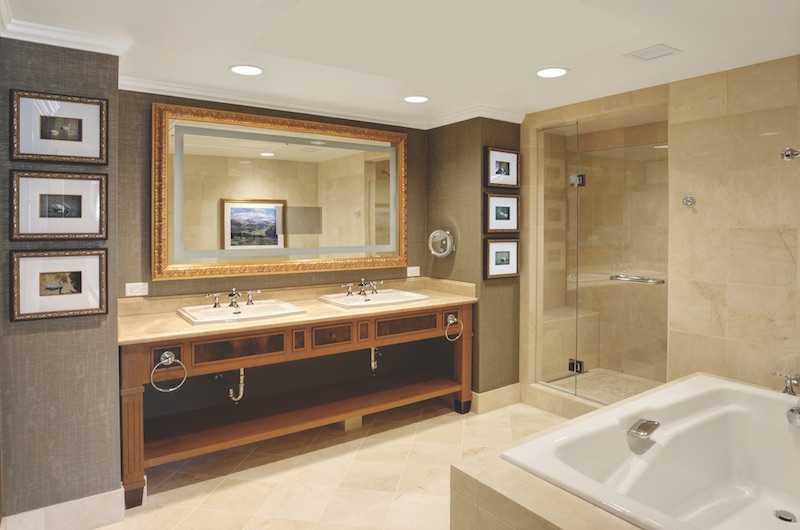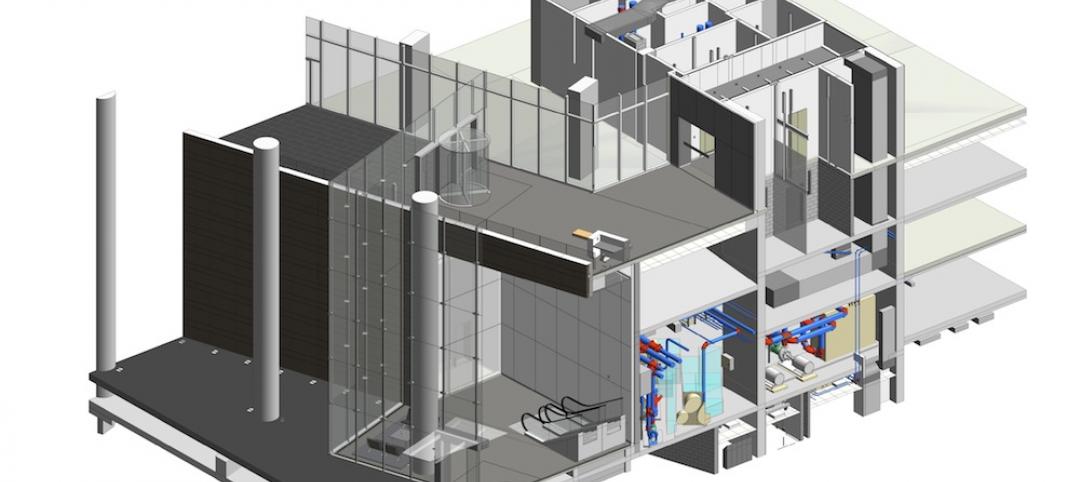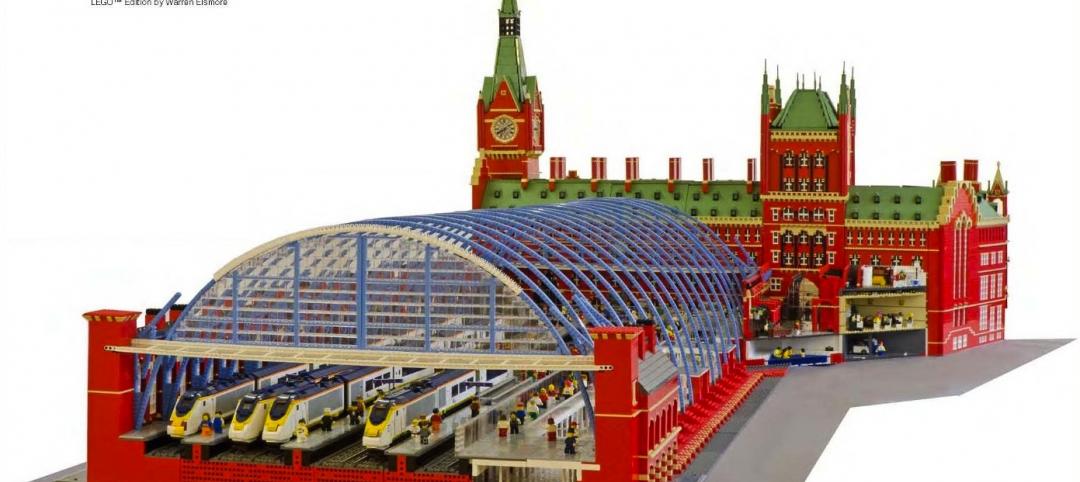There are still hurdles to overcome, but prefabrication techniques are steadily becoming more viable and widespread, as Building Teams realize the potential for labor, schedule, and even cost savings.
In order to receive the full benefits of designing and building with prefabrication techniques, such as bathroom pods, AEC firms should eye projects with repetitive layouts—hotels, student residence halls, in-patient towers, etc. “The more repetition, the more value there is in prefabricating,” says Ray Rigsby, Project Executive with Gilbane Building Co. “Any facility type that has repetitive floor plans lends itself to prefabrication.”
Bathrooms are a particularly good fit for prefabricated construction. Commercial projects such as hotels and student housing typically require large numbers of bathroom units with little or no variation unit to unit. And because bathroom dimensions meet road trucking size limits, the finished product can be shipped to the project site without having to be broken down into multiple components and reassembled on the job site.
(SEE ALSO: New white paper on modular bathroom pods offers insight on best uses)
Bathroom pods have also emerged as a pro tem solution to the construction industry’s ongoing labor shortage. “As a country, we have 1.5 million fewer trades people today than we did in 2007, when we had a similar level of construction activity going on,” says Bill Seery, Managing Director, Oldcastle SurePods, a bathroom pod manufacturer. “This is a structural change in the U.S. construction industry that is never going to go away.”
Rigsby agrees with this sentiment and believes prefabrication provides an answer. “The construction workforce is getting older, there are fewer workers coming into the trades, and there is an overall push to reduce labor costs,” he says. “Prefabrication will be used to offset this trend and in markets that are saturated with work to help offset a lack of workers.”
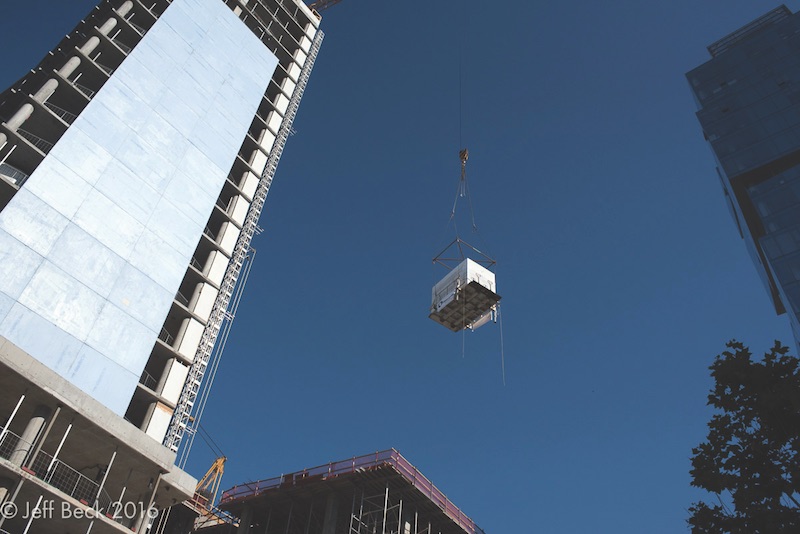 Bathroom pods are moved into position at the Seattle Embassy Suites. Jeff Beck, Courtesy Oldcaste SurePods.
Bathroom pods are moved into position at the Seattle Embassy Suites. Jeff Beck, Courtesy Oldcaste SurePods.
Maximizing the Power of Pods
In order to optimize bathroom pods for a given project, the pods need to be incorporated into the design process early—no later than design documents, says Seery. Determine the pod details early—“Reworking details defeats the purpose of prefabrication,” says Rigsby—and start planning with a solid understanding of what the final product will be.
Rigsby and Seery offer additional tips and advice based on their decade-plus career working with prefab construction methods:
- All bathrooms should be the same size and shape. Any slight deviation, other than finishes, requires a new pod template.
- Ensure pod sizes are reflected correctly in the framing details.
- The pod supplier, architect, and contractor should perform a BIM conflict analysis to ensure there are no MEP clashes.
- Factor in site storage options and installation paths for the pods during preconstruction planning. Consider issues related to access to each floor level to allow rigging of the pods.
- Designers should consider the interface between the top of the pod and the ceiling structure to avoid any gaps or misalignment of utilities.
- Make sure all necessary connection points are accessible from the outside.
- Once installed, ensure the pod is squared and plumbed.
The more planning that goes into incorporating bathroom pods, the more beneficial they will be. Based on research and client feedback, Seery estimates that bathroom pods accelerate projects by roughly two months on average.
Rigsby says bathroom pods can also improve quality compared to traditional construction. “The quality control is better, and there are fewer varying conditions in the field and less day-to-day worker variation,” he says.
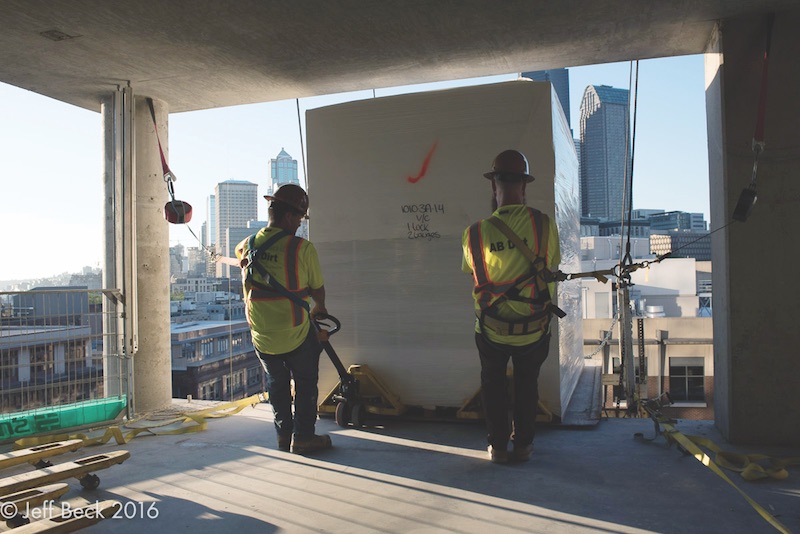 The 282-room hotel is scheduled to open this summer. Jeff Beck, courtesy Oldcaste SurePods.
The 282-room hotel is scheduled to open this summer. Jeff Beck, courtesy Oldcaste SurePods.
evolution of the bathroom pod
A decade ago, bathroom pods were constructed with basically the same process as field-built bathrooms, just in a factory setting. Since that time, however, the process has been refined and streamlined.
“We now work natively in Revit for BIM, so we can provide pod models for the architect to drop directly into their building model,” says Seery. “Our Revit models translate directly into machine code for our production robots to produce many of our production pieces, which reduces labor and provides better overall tolerances and accuracy for the pods.”
The products used within the pods have also evolved and improved. SurePods, for example, has created a patent-pending, fully water- and crack-proof ceiling assembly that offers a five-year, no-crack warranty.
Increasingly sophisticated finishes and detailing have expanded the applications for bathroom pods, from suite apartments and dormitories to five-star hotels with complex, five-fixture setups.
“When we started in 2004, the technology to fully automate part of the design-to-manufacturing process did not exist,” says Seery, “nor did some of the more progressive materials we use today.”
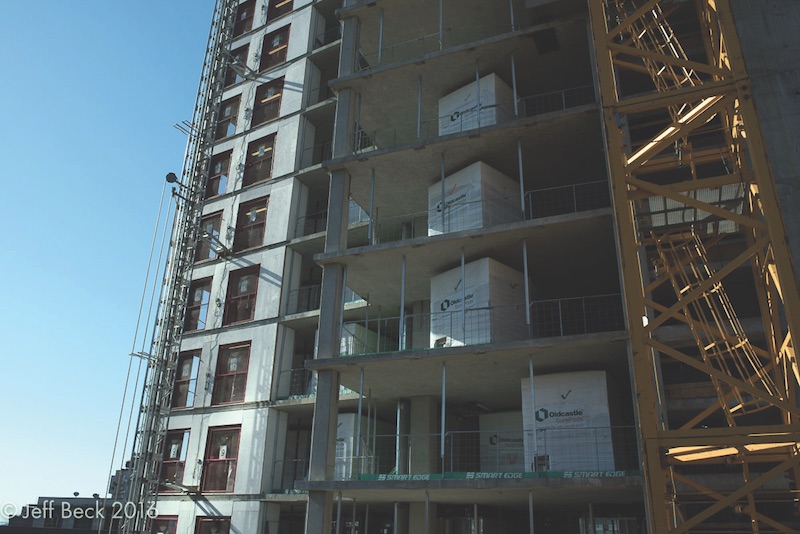 The project’s developer estimates that the use of bathroom pods shaved two months off of the construction schedule. Jeff Beck, courtesy Oldcaste SurePods.
The project’s developer estimates that the use of bathroom pods shaved two months off of the construction schedule. Jeff Beck, courtesy Oldcaste SurePods.
Related Stories
| May 2, 2013
BIM group proposes uniform standards for how complete plans need to be
A nationwide group of Building Information Modeling users, known as the BIMForum, is seeking industry input on a proposed set of standards establishing how complete Building Information Models (BIMs) need to be for different stages of the design and construction process.
| May 1, 2013
A LEGO lover's dream: Guide to building the world's iconic structures with LEGO
A new book from LEGO master builder Warren Elsmore offers instructions for creating scale models of buildings and landmarks with LEGO.
| May 1, 2013
World’s tallest children’s hospital pushes BIM to the extreme
The Building Team for the 23-story Lurie Children’s Hospital in Chicago implements an integrated BIM/VDC workflow to execute a complex vertical program.
| Apr 30, 2013
Healthcare lighting innovation: Overhead fixture uses UV to kill airborne pathogens
Designed specifically for hospitals, nursing homes, child care centers, and other healthcare facilities where infection control is a concern, the Arcalux Health Risk Management System (HRMS) is an energy-efficient lighting fixture that doubles as a germ-killing machine.
| Apr 23, 2013
Building material innovation: Concrete cloth simplifies difficult pours
Milliken recently debuted a flexible fabric that allows for concrete installations on slopes, in water, and in other hard to reach places—without the need for molds or mixing.
| Apr 19, 2013
Must see: Shell of gutted church on stilts, 40 feet off the ground
Construction crews are going to extremes to save the ornate brick façade of the Provo (Utah) Tabernacle temple, which was ravaged by a fire in December 2010.
| Apr 18, 2013
SOM, CASE team up to launch crowd-sourced apps library
SOM and CASE have formally launched AEC-APPS, the first crowd-sourced, web-based library for applications used by architects, engineers and construction professionals. This is a one-of-a-kind initiative in the AEC Industry and is a non-profit online community that allows digital tool users and toolmakers to share ideas, tips and resources.
| Apr 16, 2013
5 projects that profited from insulated metal panels
From an orchid-shaped visitor center to California’s largest public works project, each of these projects benefited from IMP technology.
| Apr 15, 2013
Using software and the power of the cloud to connect your back office to your field operations [webinar]
This webinar will focus on a new software subscription service that will help construction companies, general and specialty contractors connect their back office infrastructure with all of their field operations. The service will help capture, manage and report on the progress of existing construction jobs and help in the planning of new ones.


